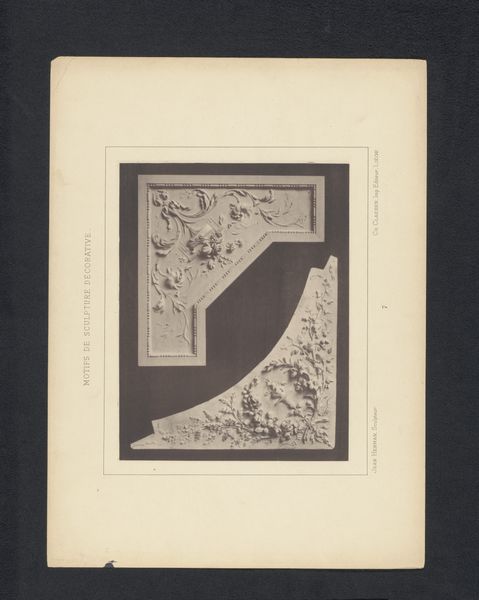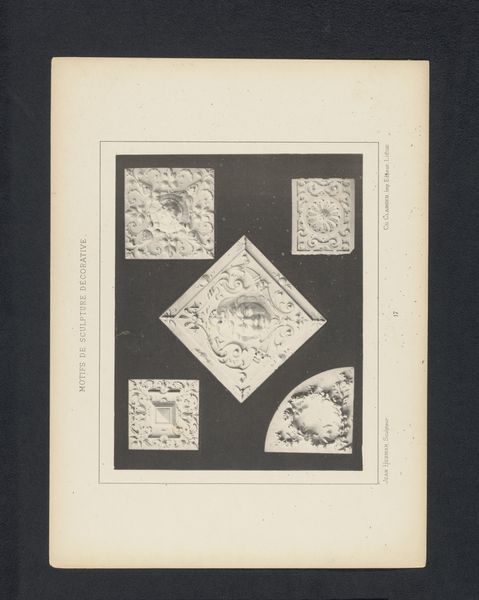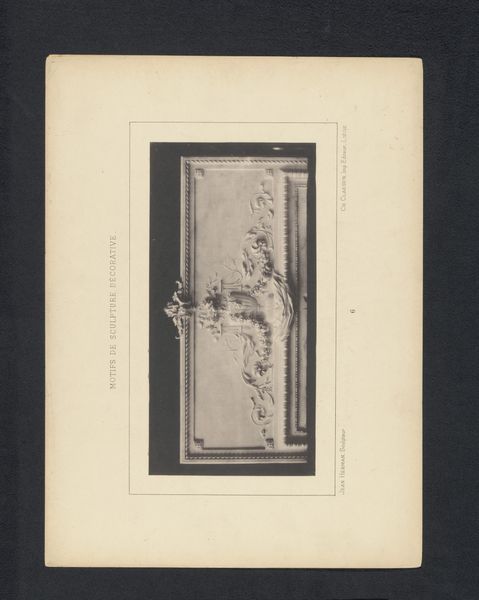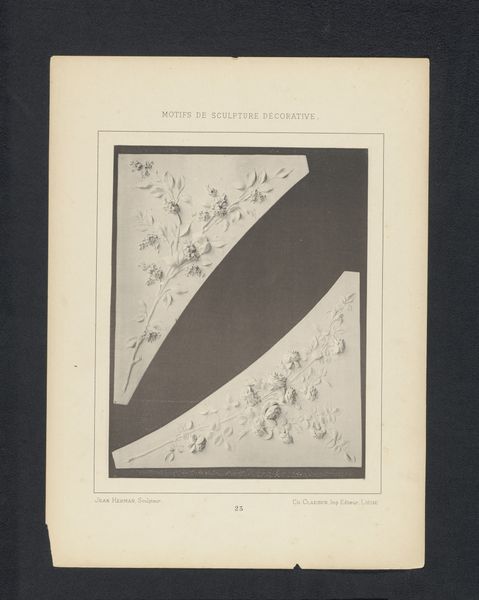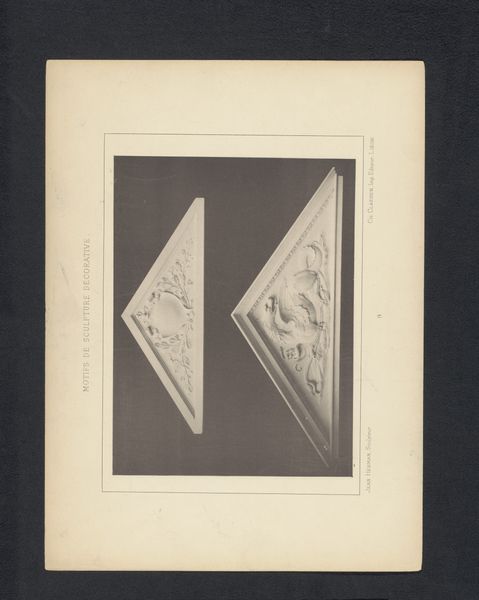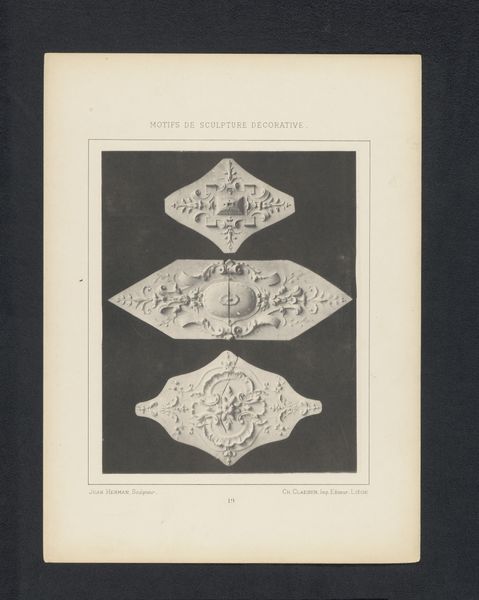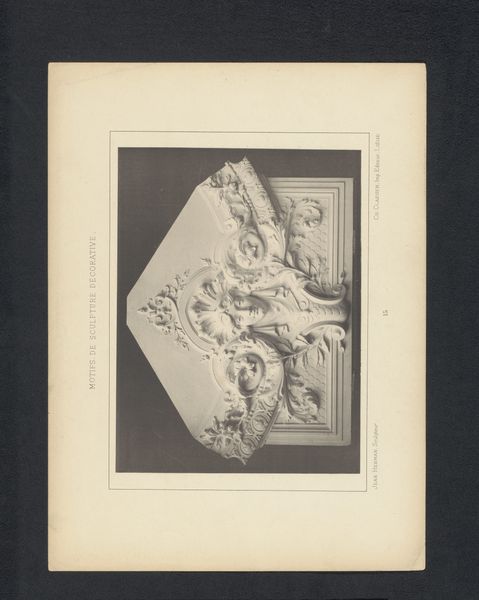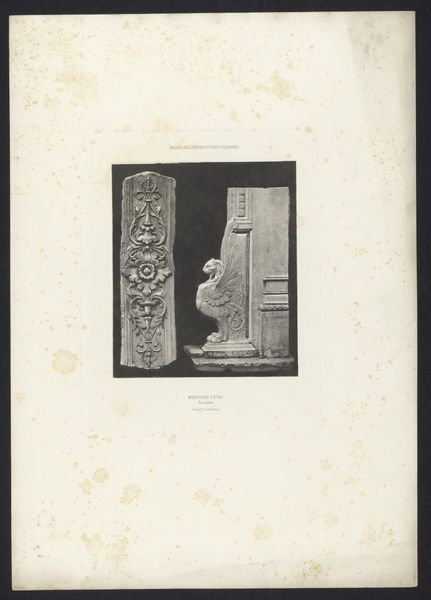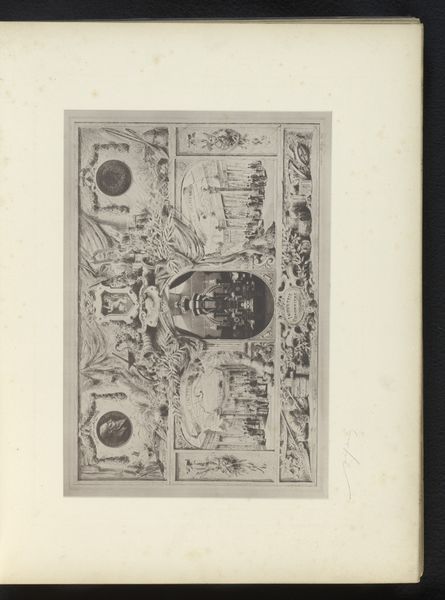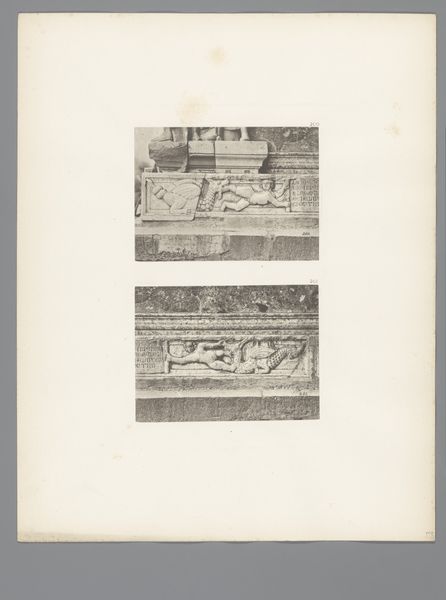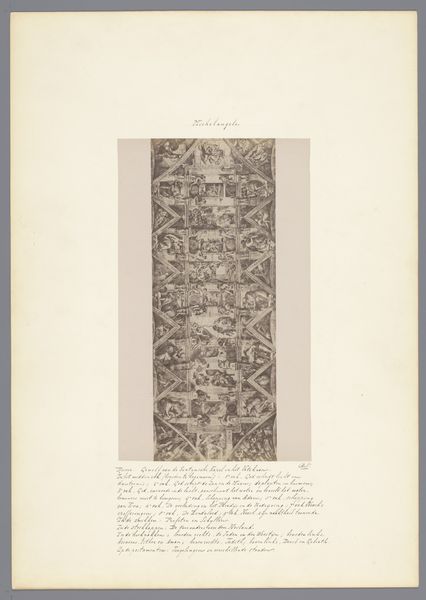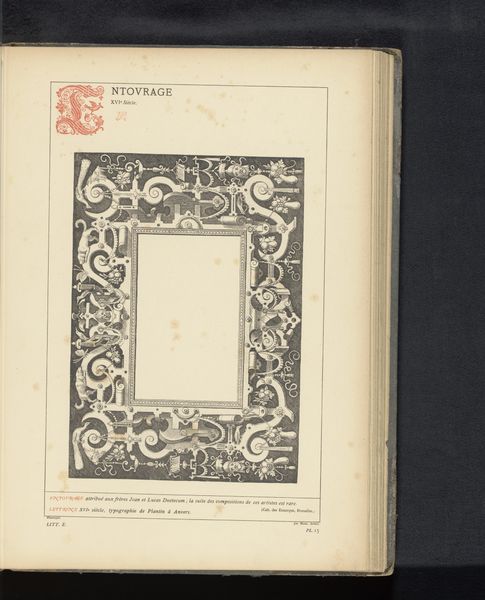
Twee reliëfs met bladranken en gezichten, gebeeldhouwd door Jean Herman before 1880
0:00
0:00
Dimensions: height 249 mm, width 209 mm
Copyright: Rijks Museum: Open Domain
Editor: Here we have "Twee reliëfs met bladranken en gezichten, gebeeldhouwd door Jean Herman," or "Two reliefs with leaf tendrils and faces, sculpted by Jean Herman." It’s dated before 1880. The image is in black and white, and looks to be a print of the reliefs. I find the classical faces and the floral design very decorative, like architectural details. What's your interpretation? Curator: Well, looking at these reliefs through a historical lens, what strikes me is how they reflect the prevailing neoclassical aesthetics of the period. This artistic style often drew inspiration from classical antiquity, particularly in architectural ornamentation and interior design. Do you notice how this print could be easily mass produced? Editor: Yes, it seems like something that could be replicated many times, and inexpensively, unlike an actual sculpture. Curator: Exactly. This brings up a key aspect of art history – the changing role of art in society. The rise of printmaking democratized access to artistic imagery. Consider the original purpose of these reliefs. Were they intended as individual art pieces, or as models for larger architectural projects? How do you think their function affects their reception? Editor: That's interesting. It's hard to say without knowing their original context, but it makes me consider how art can function differently depending on whether it’s unique or mass-produced, luxury or utility. Curator: Precisely. The "public role of art" shifts. We move away from pure aesthetic appreciation toward considering the socio-political implications of mass dissemination. Were these images used to promote certain ideals, architectural styles, or even social classes? Editor: I see what you mean! I hadn't considered it in that light. Thank you for broadening my perspective. Curator: My pleasure. It’s crucial to remember that every piece, even decorative reliefs, carries cultural information far beyond what immediately meets the eye.
Comments
No comments
Be the first to comment and join the conversation on the ultimate creative platform.
